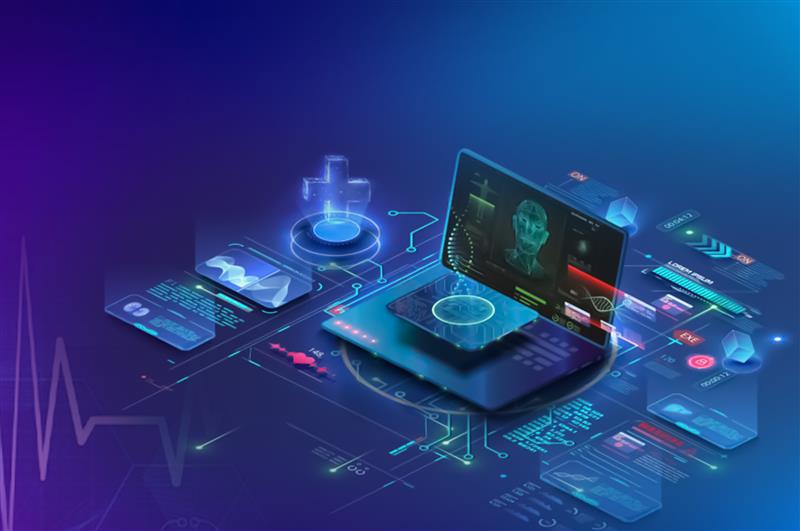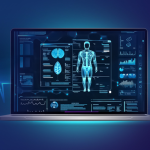Building Resilient Healthcare Software: Key Development Practices for 2025
- TronsIT Solutions
- 0 Comments
In 2025, the healthcare sector is navigating a high-stakes digital landscape. With patient data, clinical workflows, and life-saving decisions increasingly dependent on technology, the need for Resilient Software Development is no longer optional—it’s essential. Whether it’s a hospital information system, a mobile health app, or AI-driven diagnostics, the software powering modern healthcare must withstand intense loads, cyber threats, and regulatory scrutiny.
So, how can developers and healthcare technology providers build applications that remain reliable and secure, regardless of the circumstances? Let’s delve into the key practices that define resilient healthcare software development this year.
Why Resilient Software Development Matters in Healthcare
First off, let’s break down what Resilient Software Development means. It’s more than just creating software that doesn’t crash. It’s about designing systems that anticipate failure, recover gracefully, and maintain functionality even under stress.
Healthcare systems must operate around the clock. Downtime isn’t just inconvenient—it can be life-threatening. That’s why 2025 has seen a surge in tools and frameworks that promote fault-tolerant architectures, redundancy, and scalability.
Key Elements of Resilient Development:
- Microservices and containerization: These allow isolated services to fail without crashing the whole system.
- Cloud-native infrastructure: Services like AWS and Microsoft Azure for Healthcare provide advanced disaster recovery and elasticity.
- Automated testing and CI/CD: Ensuring continuous delivery with minimal bugs is critical to staying agile and resilient.
- Real-time monitoring and alerting: Tools like Prometheus and Datadog help detect issues before they escalate into catastrophic events.
Incorporating these elements from day one ensures that healthcare software can scale and adapt in a constantly evolving tech landscape.
Tackling Risk Management in Software Development
All right, now let’s discuss Risk Management in Software Development—a term that may sound corporate but is pivotal in healthcare technology.
In 2025, regulatory requirements such as HIPAA (U.S.) and the GDPR (EU) are becoming more stringent, with the emerging AI Act (EU) also expected to increase in stringency. Any slip-up in compliance can lead to massive fines, reputational damage, or worse—patient harm.
Effective risk management involves identifying, analyzing, and mitigating potential issues before they impact users. From cybersecurity threats to interoperability failures, risk lurks in every corner.
Practical Risk Management Strategies for 2025:
- Threat modeling and penetration testing: Proactively evaluate vulnerabilities.
- Version control and audit trails: Ensure traceability of changes, a key requirement in regulated environments.
- Third-party risk evaluation: Vet APIs, plugins, and libraries for compliance and performance issues.
- Patient data encryption and zero-trust architectures: These are no longer buzzwords—they’re standard operating procedures.
Healthcare providers and tech firms are now embedding risk management into every phase of the software lifecycle—from design to deployment—using DevSecOps principles. It’s not just about checking boxes; it’s about building trust in your system.

Emerging Technologies Elevating Healthcare Software Resilience
Let’s face it—2025 isn’t the same world we lived in five years ago. AI, IoT, and telemedicine are not just trends anymore—they’re standard. And each brings a new level of complexity to the software that supports them.
Healthcare Software Resilience isn’t just about bouncing back from failure anymore; it’s about being future-ready.
We’re seeing the rise of:
- AI-powered anomaly detection: AI can now flag potential system issues before humans ever notice them.
- Blockchain for health data integrity: Ensuring transparency, immutability, and security in patient data sharing.
- Digital twins for hospitals: Simulated environments that help test software at scale before real-world deployment.
All these technologies contribute to a new era of proactive resilience—software that not only reacts to problems but also anticipates and prevents them. That’s a total game-changer in terms of patient safety and operational efficiency.
Wrapping It Up: Why TronsIT Solutions Leads the Charge
If you’re thinking, “Who’s doing this right?”—look no further than TronsIT Solutions. In 2025, they’ve emerged as a go-to leader in delivering robust, scalable, and regulation-compliant healthcare software systems.
By implementing modern Resilient Software Development practices and embedding Risk Management in Software Development from the ground up, TronsIT Solutions helps healthcare organizations future-proof their platforms. Their work reflects a commitment to Healthcare Software Resilience that stands tall in the face of cyber threats, system overloads, and rapid technological changes.
Seeking a trusted partner for this journey? TronsIT Solutions has your back, providing end-to-end support for building the next generation of secure, scalable, and resilient healthcare platforms.
For more insights, explore our website!
Related Posts
How Fintech and Healthcare Solutions Are Creating New Opportunities
- TronsIT Solutions
- December 13, 2024
In the age of digital transformation, technology isn’t the most spartan-advancing industr ..
How to Ensure HIPAA Compliance in Healthcare IT Systems
- TronsIT Solutions
- November 15, 2024
In the trendy, hastily advancing digital panorama, healthcare vendors rely heavily on the era t ..



